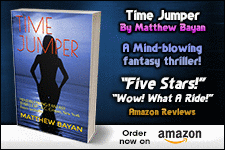The Magnificent 7 - Elements of Story - Characters Part 2
- by Matthew Bayan
- Sep 3, 2017
- 4 min read

The Magnificent 7 – Elements of Story – Characters Part 2
In a previous article, I talked about the need to make main characters not ordinary. Reading about an accountant is boring, but if he uses his knowledge of client assets to become a cat burglar and rob his clients, the accountant becomes a lot more interesting.
In this article let’s look at another essential ingredient for creating interesting, dynamic characters.
What does the character want? This is really the central thrust of any book. What will the main character do to get what he or she wants? Will he break the law? Will she betray someone? Will the character make a significant sacrifice? What is the character willing to do or do without to get what he wants?
This applies to heroes and villains. To create conflict, we put the antagonist in a position to thwart the hero from getting what he wants. Vice-versa, the hero needs to find ways to deny the villain what she wants. This creates what is frequently the central conflict of a plot.
This hero/villain conflict is usually external. The detective wants to catch the killer; the killer wants to outsmart or kill the detective in order to continue a life of crime.
To avoid cardboard characters and to make a complex character that resonates with readers, we must also create an inner conflict. If the detective’s outer conflict is how to catch a criminal, his inner conflict may ask the question: why did he choose this line of work? Was a relative killed and he needs to feel he’s making the world right, even in a small way? Is he guilty about a mistake that cost someone dearly? Every hero carries baggage which sheds light on why he or she does what they do.
After having gone to several high school reunions, I got to see what classmates became, what jobs they settled into after decades. Someone I remember with psychological problems became a psychologist. One who was repressed and never dated became a gynecologist. Some geeks became actual scientists and invented things that helped the world. My point is that the inner questions of a character create an interior conflict that may be different from the external conflict or it can fuel the external conflict. People don’t just become something, they become something for a reason.
This external/internal world of a character can provide a rich trove of quirks, habits, fears, doubts, strengths, etc. which can be used to drive the character into or away from conflict as the character tries to answer the question posed at the beginning: What does the character wants and what is he or she willing to do to get it?
A good example of the external versus the internal can be found in one of my favorite books/movies: The Silence of the Lambs by Thomas Harris. The protagonist is Clarice Starling, a female FBI agent, fairly new to the job, who has to go toe-to-toe with the antagonist, Hannibal Lecter. The exterior conflict is that she wants to find information on a different serial killer and wants to use Lecter’s expertise to help develop a profile on the killer. Lecter doesn’t want to cooperate. Toying with Clarice Starling, Lecter quickly assesses a weakness in her that he can exploit. That weakness is her inner conflict. She comes from poor Appalachian stock, what Lecter considers white trash. Starling is only a generation away from squalor and she desperately is trying to pull herself up by her own bootstraps.
Her pursuit of criminals relates not just to the outside world, but also to her inner world. What does she want? Recognition and advancement externally. Internally she wants to feel good about herself and to get beyond the embarrassment of her poor beginnings. That inner doubt raises the question externally of whether she’s good enough to be an FBI agent.
An essential turning point for Starling occurs late in the book when she is at a crime scene where a dead woman has been pulled from a river. The woman is laying on a table with numerous state and local police milling about, chatting, smoking, sometimes laughing, almost oblivious to the corpse. These are small-town police with backgrounds similar to Starling. She takes charge and empties the room by urging respect for the dead woman and taking on the motherly tones that these men would respond to, urging them to “go on, go on.” She does it peacefully, yet forcefully.
In this scene we see her use her background in a way she had previously avoided. Lecter’s taunts about her clothing and upbringing are no longer meaningful, because she’s learned that her meager background no longer needs to be avoided. She begins to reconcile her inner conflict.
Using this concept of inner/outer conflict makes for richer characters and allows readers to better identify with them. It opens up complex possibilities for the plot and elevates the story from the simplicity of checkers to the subtlety of chess.










Comments